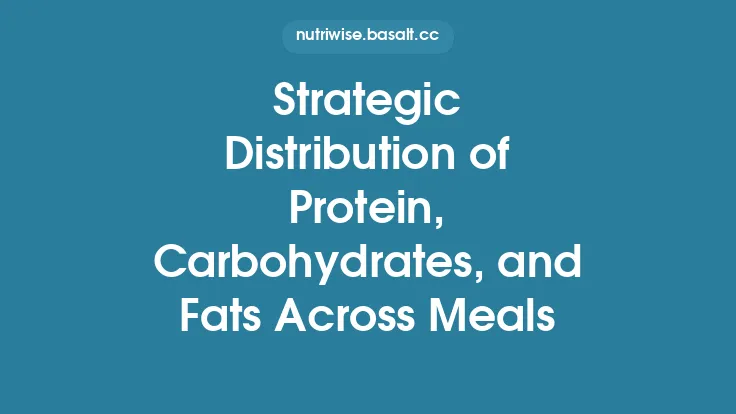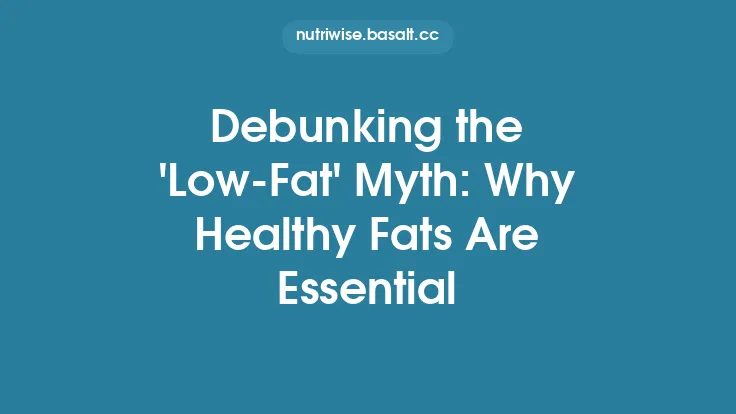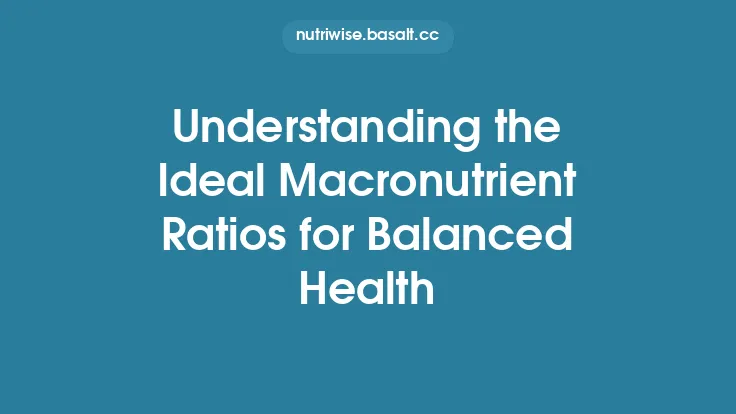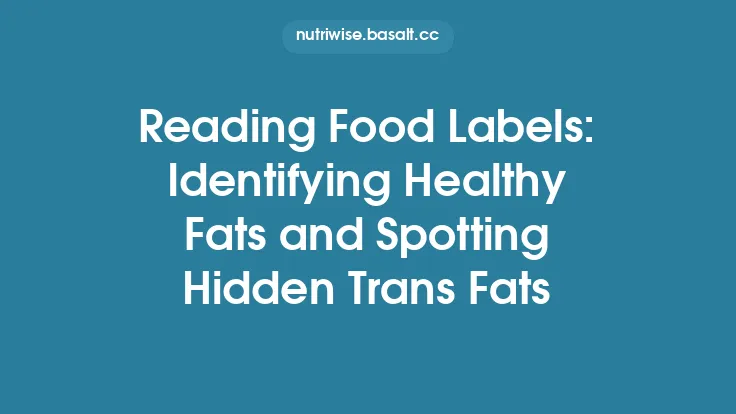Dietary fats are a cornerstone of human nutrition, providing more than twice the energy of carbohydrates or proteins, serving as building blocks for cell membranes, and acting as carriers for fat‑soluble vitamins. While the term “fat” often evokes a single, uniform substance, the reality is far more nuanced. The three primary categories—saturated, monounsaturated, and polyunsaturated fatty acids—differ in their chemical architecture, physical behavior, and how the body handles them. Understanding these distinctions equips you to make informed choices about the foods you eat, the culinary techniques you employ, and the way your metabolism processes the lipids you consume.
Chemical Basis of Fat Saturation
All dietary fats are composed of long hydrocarbon chains terminated by a carboxyl group (‑COOH). The key variable that separates saturated from unsaturated fats is the presence or absence of carbon‑carbon double bonds within that chain:
| Feature | Saturated Fatty Acids (SFAs) | Monounsaturated Fatty Acids (MUFAs) | Polyunsaturated Fatty Acids (PUFAs) |
|---|---|---|---|
| Double bonds | None | One | Two or more |
| Hydrogen atoms | Fully hydrogenated (maximum H) | One fewer H per double bond | Two fewer H per double bond |
| Geometry | Straight chain (allows tight packing) | One kink at the double bond (cis configuration typical) | Multiple kinks, increasing disorder |
| Notation | e.g., 16:0 (16 carbons, 0 double bonds) | e.g., 18:1 n‑9 (18 carbons, 1 double bond at carbon 9) | e.g., 18:2 n‑6 (18 carbons, 2 double bonds, first at carbon 6) |
The “saturation” terminology reflects the degree to which the carbon chain is saturated with hydrogen atoms. Each double bond removes two hydrogen atoms, creating a point of unsaturation that introduces a bend in the molecule. These bends prevent the fatty acids from aligning closely, influencing melting point, fluidity, and susceptibility to oxidation.
Saturated Fatty Acids: Structure and Common Sources
Molecular profile
Saturated fatty acids possess a linear, rod‑like shape because every carbon atom is linked by single bonds. This geometry enables tight intermolecular van der Waals forces, resulting in higher melting points. The longer the carbon chain, the greater the melting point; for example, stearic acid (18:0) melts around 69 °C, whereas butyric acid (4:0) is liquid at room temperature.
Typical dietary sources
| Food category | Representative foods | Predominant SFAs |
|---|---|---|
| Animal fats | Butter, lard, tallow, beef and pork fat | Palmitic (16:0), stearic (18:0) |
| Dairy | Whole milk, cheese, cream | Myristic (14:0), palmitic |
| Tropical oils | Coconut oil, palm kernel oil | Lauric (12:0), myristic |
| Processed foods | Certain baked goods, pastries (often contain added animal fats or tropical oils) | Variable blends of SFAs |
Because SFAs are solid at typical refrigerator temperatures, they contribute to the texture and structural integrity of many foods (e.g., the crumb of a pastry or the firmness of chocolate). Their stability also makes them resistant to oxidation, which is why they have a relatively long shelf life compared with many unsaturated fats.
Monounsaturated Fatty Acids: Characteristics and Food Examples
Molecular profile
A monounsaturated fatty acid contains a single cis double bond, most commonly positioned at the ninth carbon from the methyl end (designated n‑9). This single kink disrupts the tight packing of the chain, lowering the melting point relative to saturated counterparts of similar length. Oleic acid (18:1 n‑9) is the most abundant MUFA in the human diet.
Typical dietary sources
| Food category | Representative foods | Predominant MUFA |
|---|---|---|
| Plant oils | Olive oil, canola oil, avocado oil | Oleic acid (18:1) |
| Nuts & seeds | Almonds, hazelnuts, macadamia nuts | Oleic acid, palmitoleic acid (16:1) |
| Avocado | Fresh avocado flesh | Oleic acid |
| Animal products | Poultry skin, pork | Oleic acid (lower proportion than in plant oils) |
MUFA‑rich oils are liquid at room temperature but may begin to solidify when chilled (e.g., olive oil can become cloudy at ~7 °C). Their single double bond makes them moderately prone to oxidation—more so than SFAs but far less than PUFAs—so they retain quality under typical storage conditions if protected from light and heat.
Polyunsaturated Fatty Acids: Diversity and Typical Occurrences
Molecular profile
Polyunsaturated fatty acids contain two or more cis double bonds, creating multiple bends along the carbon chain. This extensive unsaturation dramatically reduces intermolecular forces, resulting in low melting points; most PUFAs are liquid at refrigerator temperatures. The double bonds are often separated by a single methylene (‑CH₂‑) group, a pattern known as “methylene‑interrupted” unsaturation.
Typical dietary sources
| Food category | Representative foods | Common PUFAs |
|---|---|---|
| Vegetable oils | Sunflower, safflower, soybean, corn oil | Linoleic acid (18:2 n‑6), α‑linolenic acid (18:3 n‑3) |
| Seeds & nuts | Walnuts, flaxseeds, chia seeds | Linoleic, α‑linolenic |
| Marine foods | Certain fish and shellfish (though many are highlighted in essential‑fatty‑acid articles) | Generally higher in long‑chain PUFAs |
| Processed snacks | Some crackers, chips (often contain blended vegetable oils) | Mixture of linoleic and other PUFAs |
Because of their multiple double bonds, PUFAs are the most chemically reactive of the three classes. They are susceptible to lipid peroxidation—a chain reaction that can generate off‑flavors and degrade nutritional quality. Antioxidants (e.g., tocopherols) are frequently added to PUFA‑rich oils to mitigate this risk.
Chain Length and Its Influence on Physical Properties
Beyond saturation, the absolute number of carbon atoms (the chain length) shapes a fatty acid’s behavior:
- Short‑chain fatty acids (SCFAs, ≤6 carbons): Highly volatile, water‑soluble, and rapidly metabolized; they are not a major focus of dietary fat intake but are produced by gut microbiota.
- Medium‑chain fatty acids (MCFAs, 8–12 carbons): Found in coconut oil (e.g., lauric acid, 12:0) and palm kernel oil; they are absorbed directly into the portal vein and oxidized preferentially for energy.
- Long‑chain fatty acids (LCFAs, ≥14 carbons): Predominate in most dietary fats; they require incorporation into chylomicrons for transport via the lymphatic system.
Longer chains increase the van der Waals forces, raising melting points. Consequently, a saturated 18‑carbon fatty acid (stearic) is solid at room temperature, whereas an 18‑carbon monounsaturated (oleic) remains liquid.
Thermal and Oxidative Stability Across Fat Types
Thermal stability
When heated, fats can undergo three primary changes: (1) thermal decomposition (breakdown of the carbon skeleton), (2) polymerization (formation of larger, often undesirable molecules), and (3) oxidation (reaction with oxygen). The susceptibility follows a predictable order:
- Saturated fats – Highest thermal stability; minimal oxidation at typical cooking temperatures.
- Monounsaturated fats – Moderate stability; can tolerate moderate heat (e.g., sautéing) before noticeable degradation.
- Polyunsaturated fats – Lowest thermal stability; prone to oxidation and off‑flavor formation at relatively low temperatures (≈120–150 °C).
Oxidative stability
Oxidation proceeds via free‑radical mechanisms, initiated by heat, light, or metal ions. The number of double bonds directly correlates with the rate of radical formation. Antioxidant content (natural or added) can offset this, but the intrinsic chemical susceptibility remains a key determinant of shelf life and sensory quality.
Metabolic Pathways and Energy Utilization
All three fat classes ultimately converge on β‑oxidation, the mitochondrial process that cleaves two‑carbon acetyl‑CoA units from fatty acyl‑CoA chains. However, nuances exist:
- Saturated fatty acids: Enter β‑oxidation directly after activation to fatty acyl‑CoA. Their lack of double bonds means no additional enzymatic steps are required.
- Monounsaturated fatty acids: Require an initial isomerization step (via enoyl‑CoA isomerase) to reposition the double bond into the trans‑Δ² configuration compatible with the β‑oxidation spiral.
- Polyunsaturated fatty acids: Necessitate multiple auxiliary enzymes (e.g., 2,4‑dienoyl‑CoA reductase) to handle the conjugated double bonds and prevent stalling of the β‑oxidation cycle.
These extra enzymatic steps can modestly affect the rate at which MUFAs and PUFAs are oxidized, but in practice, the body efficiently processes all three classes when energy demand is present. Additionally, excess fatty acids—regardless of saturation—are esterified into triglycerides for storage in adipose tissue.
Implications for Dietary Planning
While specific intake recommendations belong to other articles, a few evergreen principles arise from the chemistry described above:
- Texture and culinary function: Choose saturated fats when a solid fat is needed (e.g., pastry crusts) and monounsaturated or polyunsaturated oils when a liquid oil is desired for dressings or low‑heat applications.
- Shelf life considerations: Store saturated fats in warm‑proof containers; keep polyunsaturated oils in cool, dark places and use them promptly after opening to limit oxidation.
- Energy density: All fats provide ~9 kcal/g, but the metabolic handling of medium‑chain saturated fats can lead to a slightly higher proportion of immediate oxidation versus storage.
Understanding these functional attributes helps align food choices with cooking methods, storage practices, and personal energy needs without venturing into prescriptive guidelines.
Practical Tips for Selecting Fats Based on Desired Attributes
- Assess the required physical state
- *Solid at room temperature*: Opt for saturated fats (e.g., butter, coconut oil).
- *Liquid but viscous*: Choose monounsaturated oils (e.g., olive oil).
- *Very fluid*: Use polyunsaturated oils (e.g., safflower oil) for light dressings.
- Match the cooking temperature
- *High‑heat methods (frying, searing)*: Favor fats with higher thermal stability—primarily saturated or high‑oleic monounsaturated oils.
- *Medium‑heat sautéing*: Standard monounsaturated oils perform well.
- *Low‑heat or no‑heat applications*: Polyunsaturated oils retain their nutritional profile best when not exposed to heat.
- Consider oxidative protection
- If you need a fat that will sit uncooked for extended periods (e.g., in a pantry), prioritize saturated fats or monounsaturated oils that contain natural antioxidants (e.g., extra‑virgin olive oil).
- For polyunsaturated oils, store in amber glass, refrigerate after opening, and limit exposure to air.
- Balance flavor and mouthfeel
- Saturated fats often impart a richer, buttery mouthfeel.
- Monounsaturated oils contribute a smoother, slightly fruity profile.
- Polyunsaturated oils can be neutral or mildly nutty, depending on the source.
By aligning the chemical characteristics of each fat type with the functional demands of your meals, you can harness the strengths of saturated, monounsaturated, and polyunsaturated fats while maintaining the quality and stability of the foods you enjoy.





